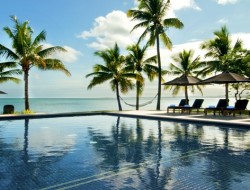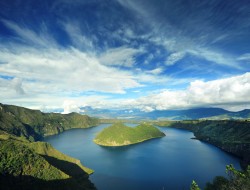Things you must see when in Australia.
Australia, the world’s sixth-largest country and the only nation that has jurisdiction over an entire continent, attracts tourists with an array of natural attractions that range from rare wildlife to geologic phenomena. You can find cultural attractions in many of Australia’s vacation destinations, which include cosmopolitan cities as well as sprawling wildernesses.
Sydney
Sydney, Australia’s largest city, offers more than 70 beaches. Its iconic white-sailed Opera House (sydneyoperahouse.com), designated a UNESCO World Heritage Site, offers more than 40 performances a week in a variety of genres. Also worth a visit is the Sydney Aquarium.
Melbourne
Australia’s cultural epicenter is the city of Melbourne, where you can take in a performance at the Australian Ballet and admire more than 50,000 plants at the Royal Botanic Gardens. Also visit Federation Square, the city’s main gathering spot and home to the Australian Centre for the Moving Image and the Ian Potter Centre, a gallery devoted entirely to Australian art.
Other Cities
In Canberra, the national capital, peruse the National Museum of Australia (nma.gov.au), home to world’s largest collection of bark paintings and more than 200,000 historical objects. In Brisbane, Australia’s third-largest city, you can view dinosaur fossils at the Queensland Museum, bike through the City Botanic Gardens (brisbane.qld.gov.au) and visit the Lone Pine Koala Sanctuary, home to koalas, echidnas, dingoes and Tasmanian devils.
Red Centre
The world’s largest monolith, Uluru, is located in Uluru-Kata Tjuta National Park, a UNESCO World Heritage site in Australia’s Red Centre, the geographic heart of the country. Uluru is more than 1,141 feet high and has a circumference of nearly 6 miles. The closest town, Alice Springs, boasts a rich aboriginal culture. Allot time for Watarrka National Park, where you can hike around Kings Canyon.
Great Barrier Reef
The Great Barrier Reef, the planet’s largest coral reef, stretches 1,240 miles off northeastern Australia. A World Heritage Site, the reef is home to 400 types of coral and 1,500 fish species. You can admire the colorful reef by snorkeling, diving or viewing from a glass-bottom boat. Multiple diving schools operate in the city of Cairns, the departure point of many day trips to the reef.
Coral Coast
The Coral Coast in western Australia encompasses Ningaloo Marine Park, which protects a 162-mile fringing reef. From April to June, you can swim with whale sharks, the world’s largest fish. Visit from June and November to see the humpback whales. Also in this region is Shark Bay, a World Heritage Site where you can see the Hamelin Pool stromatolites, which scientists consider the planet’s oldest living fossils.
Greater Blue Mountains
Approximately 62 miles west of Sydney is the Greater Blue Mountains Area, a World Heritage Site that encompasses more than 2.4 million acres of mainly eucalyptus forest. The region is conducive to rappelling, climbing and mountain biking. Here, you can explore the Jenolan Caves and admire the 984-feet-long Wentworth Falls. Alternatively, enjoy the views from aboard the Zig Zag Railway.
Tasmania and Other Islands
Tasmania, Australia’s only island state, is home to 17 national parks, and 20 percent of the island’s wilderness is inscribed as a World Heritage Site. Kangaroo Island, less than 10 miles off Australia’s southern coast, offers many opportunities for wildlife encounters. Fraser Island, a World Heritage Site and the world’s largest sand island, is 186 miles north of Brisbane off Australia’s eastern coast. Four-wheel drive is necessary to get around Fraser, which boasts a diverse fauna and more than 100 freshwater lakes.
Ready to plan that trip to Australia? Call the Travel Team at 1-800-788-0829.



